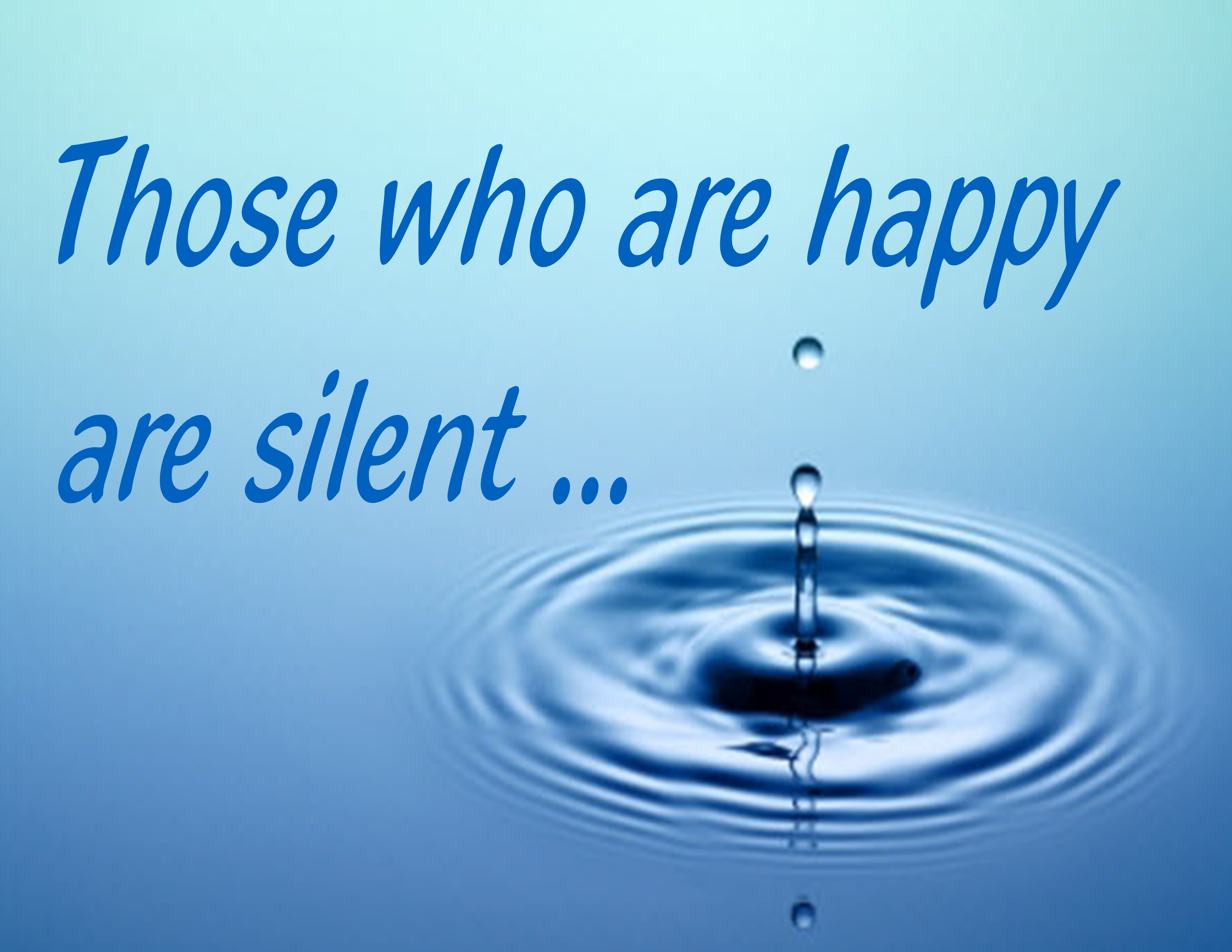 Submitted by Dr. Arati Mishra on
Submitted by Dr. Arati Mishra on

The mind needs to be silenced to be free from habitual thoughts so as to be prepared for manifesting higher, creative and intuitive ideas. The silent mind removes stress, receives the downpour of Light and Peace and facilitates the working from a higher plane of consciousness.
Perhaps one of the most thoughtful things one can perform upon oneself is to practise silencing the mind at times. The sceptic might get disturbed at the very idea of the silent mind as usually the mind is the instrument of the thinking process. It can be arguably asked as to how we could afford to think if we conceive of silencing the mind. In fact, silencing the mind could be blasphemous as it would do injustice to Descartes’ aphorism penned in 1636, ‘I think therefore I am’ (Cogito ergo sum).
A deeper introspection reveals that in ordinary life, our thoughts usually dwell in the domain of the trivial and the mundane, are nurtured by culturally ingrained stereotypes and socially compatible conventions and go on rotating in what is best described by the Aurobindonian adage “The Wheel’s circling immobility (1)”. We go on brooding over the past, trivialise the present and indulge in anticipating or day-dreaming about the future. Seldom do we stay in the zone of creative thoughts, rarely is our objectivity not foreshadowed by subjectivity, and not less frequently is our rationality subdued by irrationality. In short, it can be justifiably confessed that, by and large, we are not accustomed to the art of true thinking!
In the perspective of Integral Yoga Psychology, silencing the mind is a fundamental and preliminary step of a self-development programme. The mind has to be silenced to silence that trivial round of daily thoughts that continue to plague us; thoughts like whether the door has been locked or whether the electronic gadget has been switched off or whether someone late to come home is safe or not. The mind needs to be silenced to silence that unnecessary clamour of thoughts amassed from digesting a prolific pile of unnecessary information from newspapers, television and the Internet, information which mostly is of no use and needs to be dealt with as we deal with junk in the inbox. The mind needs to be silenced to silence that never-ending conflict between arguments which are equally valid so that thesis and antithesis go on contradicting each other without constructing any real integrative synthesis. The mind needs to be silenced to silence that volatile indulgence of emotions over logic, of sentiments over reason that leads even sensible people to commit monstrous stupidities as in erratic crowd behaviour during riots and feuds. The mind needs to be silenced to put at rest those taboos, superstitions, conventions, stereotypes and dogmas that constitute the irrationality of human existence which is the hallmark of human limitation.
What happens when the mind is thus silenced? The mind becomes functionally ready to be the ground where higher, creative thoughts can manifest. The mind becomes capable of intuitive thought and intuitive discrimination that illumines and clarifies where reasoning gets limited. The mind becomes ready to receive the downpour of peace and joy that alone can bring a settled poise of the being. The mind becomes capable of overcoming stress in a holistic way. The mind gradually acquires the capacity to integrate thought and will so that the thought becomes automatically effective and the will becomes spontaneously luminous. The consciousness can operate from a supra-cognitive level above the ordinary mentality where supra-rational faculties are spontaneously and naturally active. In short, the mind begins to be capable of operating from higher planes of consciousness.
It may sound easy but silencing the mind is a difficult art that has to be consciously cultivated and practised for the mind is habituated to go on thinking. A guided imagery may be needed to put the mind on track. Once the mind can silence itself, one can proceed to be stationed in a poise above the thinking mind that brings in peace and opens up the possibility of proceeding towards intuitive thinking. Or else, one may be poised behind the external mind in the true Mental Being (Monomaya Purussa) and witness the world around from a non-judgmental poise.
A simple guided imagery is often useful to initiate the process of silencing the mind for those not habituated to meditative practices. The subject can conceive the mind to be an empty and locked house. Strangers in the form of thoughts come to this house of the mind from many directions but as the house is locked, they cannot enter but encircle the house and gradually fade away. The mind becomes either silent and empty, void or zero. Gradually one can imagine a white column of white light which is also a solid block of peace descending from above, piercing the roof of the house of the mind, occupying the mind, filling it brim to brim.
Such imageries are helpful initially; they can be dispensed once one has learnt to silence the mind. The silent mind was always valued in the spiritual tradition but the importance of the ‘descent’ of the Light and Peace was never explored till Sri Aurobindo revealed its significance for a transformational yoga.
Silencing the mind opens up enormous possibilities for inner progress and perfection of consciousness. That is why mystics and aspirants have always aspired to cultivate silence to be able to manifest thoughts that are lofty, creative and spontaneously effective, thoughts that glide down from the highest ranges of consciousness, thoughts that well up from the deepest ranges of the soul:
‘“Silence is all, say the sages.
Silence watches the work of the ages;
In the book of Silence the cosmic Scribe has written his cosmic pages;
Silence is all, say the sages.
What then of the word, O speaker?
What then of the thought, O thinker?
Thought is the wine of the soul and the word is the beaker;
Life is the banquet-table — the soul of the sage is the drinker (2).”

Author: Dr. Soumitra Basu
References
1. Sri Aurobindo. Birth Centenary Library, Volume 28. Pondicherry: Sri Aurobindo Ashram Trust; 1970, p.18.
2. Sri Aurobindo. SABCL, Volume 5. 1971, p.107.
Source: http://www.namahjournal.com/doc/Actual/The-silent-mind-vol-22-iss-4.html
Dr. Soumitra Basu, a practising psychiatrist and member of SAIIIHR, is the Director of a school of psychology, Integral Yoga Psychology. He is also one of the editors of NAMAH.
- 864 reads